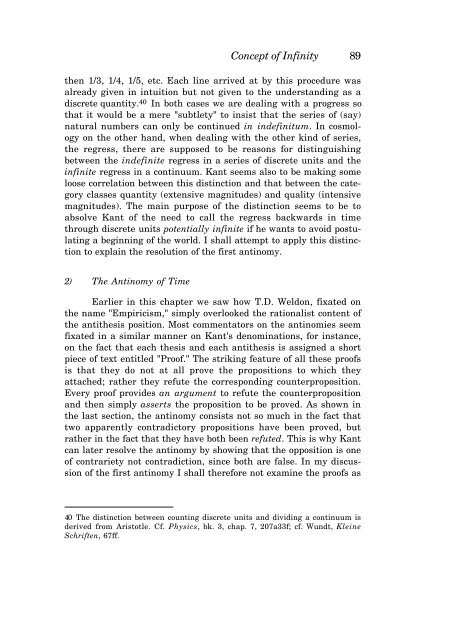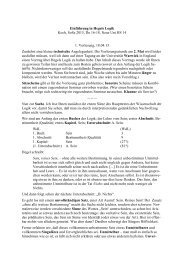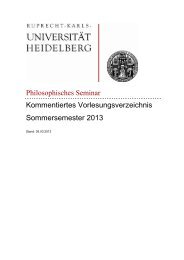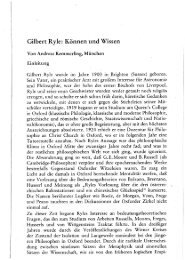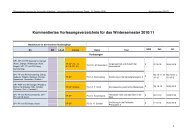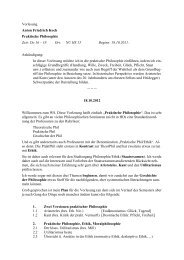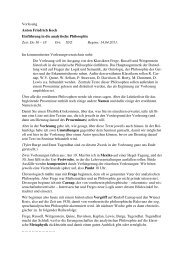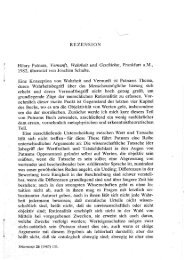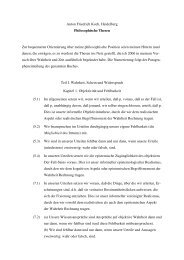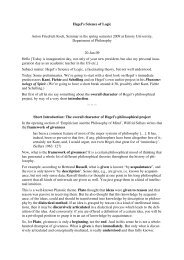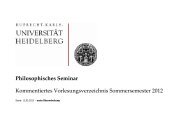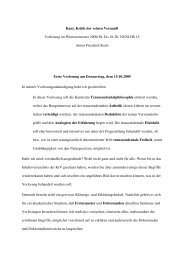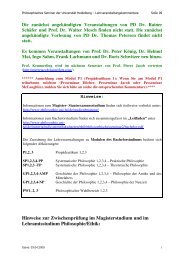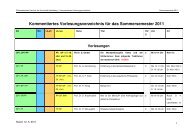KANT'S CRITIQUE OF TELEOLOGY IN BIOLOGICAL EXPLANATION
KANT'S CRITIQUE OF TELEOLOGY IN BIOLOGICAL EXPLANATION
KANT'S CRITIQUE OF TELEOLOGY IN BIOLOGICAL EXPLANATION
Create successful ePaper yourself
Turn your PDF publications into a flip-book with our unique Google optimized e-Paper software.
Concept of Infinity 89<br />
then 1/3, 1/4, 1/5, etc. Each line arrived at by this procedure was<br />
already given in intuition but not given to the understanding as a<br />
discrete quantity. 40 In both cases we are dealing with a progress so<br />
that it would be a mere "subtlety" to insist that the series of (say)<br />
natural numbers can only be continued in indefinitum. In cosmology<br />
on the other hand, when dealing with the other kind of series,<br />
the regress, there are supposed to be reasons for distinguishing<br />
between the indefinite regress in a series of discrete units and the<br />
infinite regress in a continuum. Kant seems also to be making some<br />
loose correlation between this distinction and that between the category<br />
classes quantity (extensive magnitudes) and quality (intensive<br />
magnitudes). The main purpose of the distinction seems to be to<br />
absolve Kant of the need to call the regress backwards in time<br />
through discrete units potentially infinite if he wants to avoid postulating<br />
a beginning of the world. I shall attempt to apply this distinction<br />
to explain the resolution of the first antinomy.<br />
2) The Antinomy of Time<br />
Earlier in this chapter we saw how T.D. Weldon, fixated on<br />
the name "Empiricism," simply overlooked the rationalist content of<br />
the antithesis position. Most commentators on the antinomies seem<br />
fixated in a similar manner on Kant's denominations, for instance,<br />
on the fact that each thesis and each antithesis is assigned a short<br />
piece of text entitled "Proof." The striking feature of all these proofs<br />
is that they do not at all prove the propositions to which they<br />
attached; rather they refute the corresponding counterproposition.<br />
Every proof provides an argument to refute the counterproposition<br />
and then simply asserts the proposition to be proved. As shown in<br />
the last section, the antinomy consists not so much in the fact that<br />
two apparently contradictory propositions have been proved, but<br />
rather in the fact that they have both been refuted. This is why Kant<br />
can later resolve the antinomy by showing that the opposition is one<br />
of contrariety not contradiction, since both are false. In my discussion<br />
of the first antinomy I shall therefore not examine the proofs as<br />
40 The distinction between counting discrete units and dividing a continuum is<br />
derived from Aristotle. Cf. Physics, bk. 3, chap. 7, 207a33f; cf. Wundt, Kleine<br />
Schriften, 67ff.


